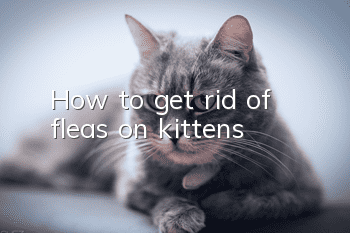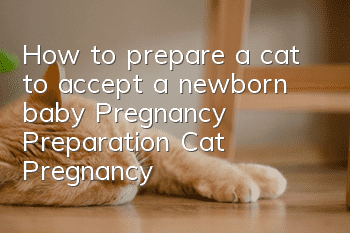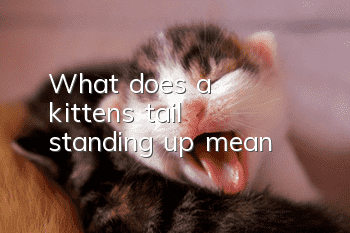What will happen if a cat’s body lacks mineral elements?

I wonder if you have ever looked at cat food lists. Do cat food lists often contain additives? The additives contain elements that cats need, including mineral elements. Minerals include macro mineral elements and trace mineral elements. Calcium, phosphorus, sodium, potassium, chlorine, sulfur, and magnesium are known to be essential macromineral elements for pets. Their content in the body of pets exceeds one ten thousandth. Today, let’s talk about the lack of macromineral elements in cats. What will happen?
Calcium and phosphorus
Calcium and phosphorus are probably the two mineral elements we have heard about the most, because calcium and phosphorus are the most abundant mineral elements in animals. The ratio of calcium and phosphorus will vary depending on the type, age and nutritional status of the cat. changed.
When calcium is deficient:
The cat’s desire to eat will decrease, its digestion and absorption rate will decrease, its spirit will decline, its activity level will decrease significantly, its blood calcium level will decrease, it will suffer from osteoporosis, and its fertility will also be damaged. Insufficient calcium in cats will cause symptoms such as rickets, osteomalacia, hypocalcemia, loss of appetite, pica and other symptoms. Tests have shown that calcium deficiency will cause the bones of kittens to become thinner, especially the lumbar spine, followed by the pelvis.
But too much calcium can be problematic: it can cause serious skeletal abnormalities, especially in growing kittens. When the calcium content is too high, the cat's feeding ability decreases, its growth slows down, and its blood calcium concentration increases. High calcium also increases magnesium requirements.
When cats are deficient in phosphorus:
It manifests as loss of appetite, body weight loss, growth stagnation, etc. Feeding adult cats a diet with a calcium to phosphorus ratio of 4:1 can lead to phosphorus deficiency, manifested as hemolytic anemia, motor system disorders and metabolic acidosis.
Sodium, potassium, chlorine
We often hear that cats cannot eat food that is too salty, so some cats are very resistant to sodium. However, sodium, potassium, and chlorine are electrolyte elements that mainly exist in soft tissues and body fluids. The main substance that maintains the homeostasis of the body's internal environment and regulates osmotic pressure. When the content of sodium and chlorine in cat food is insufficient, it will reduce the cat's appetite, lead to less drinking water, dry skin, hair loss, slowed growth, and the utilization rate of nutrients in cat food will also decrease.
Lack of sodium and chlorine in cats will lead to heart and kidney dysfunction, heart failure, slow reaction; muscle weakness, dehydration, slow growth, and weight loss. Failure to provide high-quality drinking water to cats can lead to poisoning. The symptoms include extreme thirst, constipation, muscle twitching, and in severe cases, death..
In addition to meeting the cat's normal physiological needs, adding sodium chloride to cat food can also stimulate the cat to drink more water to prevent urinary stones. Sodium chloride is also good for cats with diarrhea and vomiting. Generally, 1% to 2% sodium chloride can be added to the cat’s food. Potassium regulates the body's osmotic pressure and acid-base balance; it participates in the metabolism of carbohydrates and proteins in cells; potassium helps maintain nerve health, normal heartbeat patterns, and normal muscle contraction; potassium is also used to maintain the anti-infection process .
A lack of potassium in the body can lead to muscle weakness, dehydration, slow growth, weight loss, heart and kidney dysfunction, unresponsiveness and heart failure.
However, excessive potassium intake by pets will affect the absorption of sodium, magnesium and other elements, and even cause "magnesium deficiency cramps".
Magnesium
Magnesium is an essential element for maintaining normal life activities and metabolic processes of the body. Magnesium affects a variety of biological functions of cells and is involved in energy metabolism, protein and nucleic acid synthesis. Magnesium also affects the transport of other ions, such as potassium and calcium ions, and regulates signal transmission.
Insufficient magnesium in pets will cause growth and development disorders, neuromuscular excitability, anorexia, and in severe cases, convulsions or even coma and death. Magnesium deficiency will also affect the deposition of calcium in soft tissues, greatly increasing calcium levels
Excessive magnesium intake in pets will cause symptoms of lethargy, movement disorders, decreased food intake, and diarrhea. In severe cases, it may lead to slow growth or even death. Cats will excrete excess magnesium in the urine in the form of magnesium ammonium phosphate, but excessive accumulation of magnesium ammonium phosphate crystals can block the urethra and cause bladder accumulation.
Sulfur
Sulfur element is widely distributed in various cells of the body and participates in the synthesis of pet keratin. It is an essential element in all cells. A sulfur deficiency usually occurs when a pet is deficient in protein.
Sulfur deficiency will cause pet body weight loss, abnormal collagen metabolism, and slow growth of hooves, claws, hair and other tissues. Excessive sulfur generally rarely occurs. Using inorganic sulfur as an additive 0. 3% to 0. 5% higher than the required amount will cause sulfur poisoning in pets, which will cause them to suffer from reduced feed intake, body weight loss, etc.
At the same time, pets will show symptoms such as depression, constipation, and diarrhea, which can lead to death in severe cases.
- What to do if your cat has fleas? Remove fleas from your cat regularly
- What causes retching in cats?
- Do cats hold in their poop and pee? How to soothe a cat's mood?
- How much does an ultrasound cost for a pregnant cat?
- What should I do if my cat sheds a lot of hair in winter?
- Why does a cat lose its beard?
- Why do cats sleep on their backs?
- Why does a cat pee on the bed? Why does a cat pee on the bed?
- What to do if the cat is lost
- Cats cannot eat these four fruits



